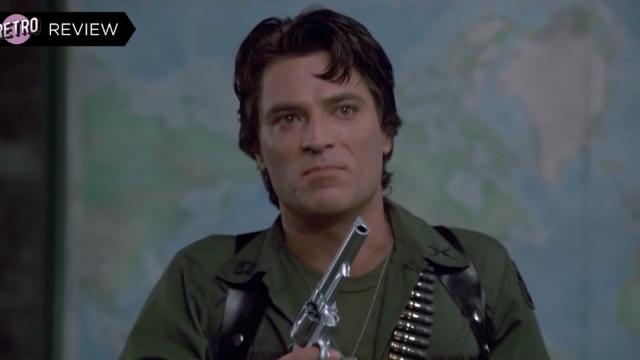Today marks the debut of Day of the Dead, a new Syfy TV series that takes inspiration from George A. Romero’s 1985 zombie classic of the same name. At this year’s San Diego Comic-Con, the show’s creators explained that the series — set during the first 24 hours of a zombie apocalypse — will pay homage to the film but will mostly strive to tell its own story. Those are agreeable enough terms because there’s no such thing as too much horror on TV. But using the name Day of the Dead while not really resembling Day of the Dead in story or tone feels a bit duplicitous. On the other hand, Day of the Dead really needs no improvement or update.
Though it’s traditionally been the least-vaunted entry in Romero’s trilogy that also includes Night of the Living Dead and Dawn of the Dead, Day of the Dead still holds up as an excellently tense, extremely gory (Tom Savini’s genius strikes again, with an assist from Greg Nicotero among others) example of how nihilism and, in a weird way, hope can somehow coexist in a single story. Shifting from the Pittsburgh environs of Romero’s first two zombie films, Day of the Dead takes place in Florida — evidenced by the opening scene’s helicopter fly-over of a beachy town populated by zombified tourists and at least one giant alligator. But there are no tropical dreams for protagonist Sarah (Lori Cardille), only persistent nightmares, since the horror of being alive during an undead takeover is only slightly greater than the circumstances of her survival. As part of a team of scientists trying to figure out how to cure or eradicate the zombie problem, Sarah’s the sole woman living in an underground missile silo amid a few colleagues and a group of military men led by the macho Captain Rhodes (Joseph Pilato). The soldiers were originally tasked with protecting the researchers but have gotten more foul-mouthed, racist, controlling, leering, and trigger-happy as the weeks pass.
Even more than Romero’s first two Dead films, Day of the Dead explores the existential dread that comes with wondering if you and the (mostly awful) people you’re surrounded with are all that remains of your species. The initial panic of losing supremacy on the food chain has long since subsided; now, everyone just is teetering on the edge of exhaustion. Sarah is the most practical member of the group, insisting on rules and procedures the military guys don’t bother to follow half the time — which is worrisome, because many of them pertain to the zombies they keep corralled for use in experiments, as well as the wild mob of undead that hungrily paws at their perimeter fence.
Sarah’s also the most level-headed among the science team, which is led by the increasingly unhinged Dr. Logan (Richard Liberty). He’s earned the nickname “Frankenstein” with good reason — again, all praise to Savini and his creatively disgusting ways with dripping entrails, exposed brains, and severed heads — but his quest to figure out why zombies become zombies gets sidetracked when he realises one of the undead in his care, dubbed “Bub” (Sherman Howard), is more self-aware than the rest. A scrap of civility and normalcy comes in the form of helicopter pilot John (Terry Alexander) and radio operator Bill (Jarlath Conroy), who mostly keep to themselves — John’s point of view is that maybe humans aren’t supposed to understand what’s happening, except that it might have to do with punishment from an angry god — but become Sarah’s allies when all-out chaos descends on their makeshift community.
As Day of the Dead progresses, it becomes clear that the clashing points of view (kill the zombies; study, cure, and/or train the zombies; flee to an island and escape the zombies) are what’s going to tear the group apart — at least, until the zombies themselves get a chance to handle that in a more literal sense. Sarah tries to reason with everybody — “Maybe if we tried working together we could ease some of the tensions!” — but the only creatures in Day of the Dead who are truly working together are the ones trying to devour human flesh. It’s no new revelation that the movie is about humans losing their humanity as zombies discover theirs; “civil behaviour is what distinguishes us from the lower forms” is one of the last lucid things that Dr. Logan says.
There’s no doubt what Romero’s meaning is — and his movie remains potent not just because of the loving attention it gives to special effects involving throats being ripped out and heads being ripped off, but because of the question at its core: is humanity even worth saving? Should it step aside for these new apex predators, who are obviously thriving? Though Sarah, John, and Bill make it difficult to declare that total extinction is the right answer, the rest of the characters suggest that maybe the zombies are doing us a favour. It seems unlikely that the Day of the Dead TV show, which appears to be a bit lighter in tone (though it’s worth noting it doesn’t look like it skimps on the gore), will follow that same path. But considering the state of the real world in 2021, maybe it’ll stay true to Day of the Dead’s not-so-subtle implication that humankind is getting precisely what it deserves.
Day of the Dead will air on SBS in Australia.
